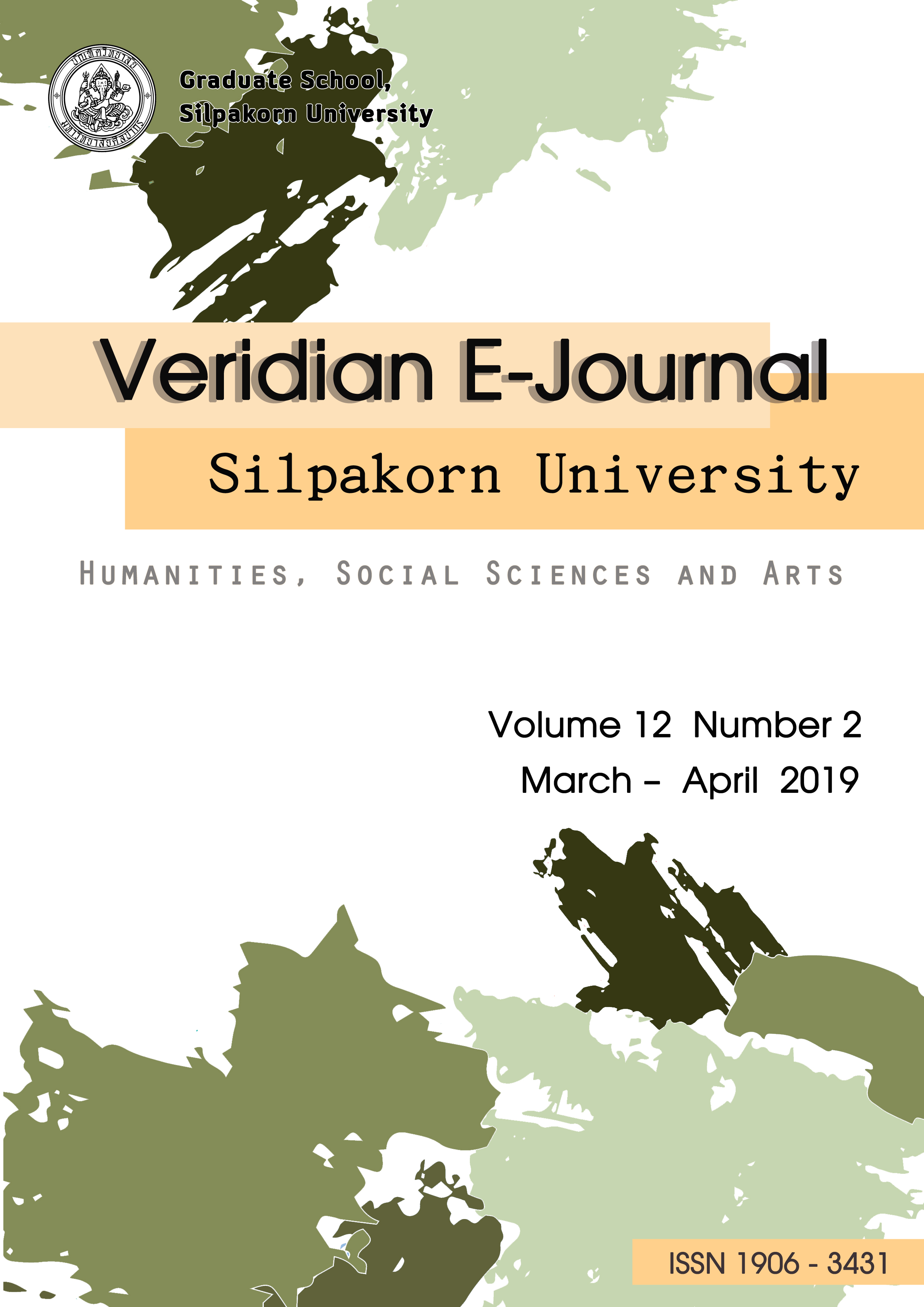ศิลปศึกษากับการส่งเสริมสันติวัฒนธรรม (Art Education for Promoting Peace Culture)
Main Article Content
Abstract
ประเทศไทยเป็นสังคมที่มีความหลากหลายทางศิลปะ วัฒนธรรม ชาติพันธุ์ ศาสนา ภาษา การแต่งกาย ความเชื่อ เพศ วัย และการศึกษา ซึ่งเป็นสังคมที่มีลักษณะเฉพาะแตกต่างกันไปตามภูมิภาคต่าง ๆ หากบุคคลไม่มีความรู้ความเข้าใจในวัฒนธรรม ขนบธรรมเนียมประเพณีของชาติพันธุ์อื่น จะทำให้เกิดความขัดแย้งทางสังคมที่อาจทวีเป็นความรุนแรงได้ ในบทความนี้จะกล่าวถึงปัจจัยที่ส่งเสริมให้เกิดสันติวัฒนธรรมในประเด็นต่าง ๆ จากผลกระทบที่เกิดขึ้นทั้งภายในและต่างประเทศ ด้วยวิธีการทบทวนวรรณกรรมอย่างเป็นระบบ คือ การกำหนดวัตถุประสงค์ของการศึกษา (Review Question) การกำหนดกรอบหรือคำสำคัญในการสืบค้น (Conceptual framework) การจัดหมวดหมู่งานวิจัยที่เกี่ยวข้องในประเด็นต่าง ๆ (Inclusion Criteria) และการสังเคราะห์เชื่อมโยงความเกี่ยวข้องกับประเด็นที่สนใจ (Synthesis) ซึ่งมีงานวิจัยที่เกี่ยวข้องกับการสร้างสันติวัฒนธรรมในประเด็นต่อไปนี้ อาทิ สถาบันครอบครัว สถาบันการศึกษา สถาบันการปกครอง และสถาบันอื่นๆ ได้แก่ เศรษฐกิจ ทรัพยากร สื่อสารมวลชน ศาสนา พบว่าการทำให้เกิดสันติวัฒนธรรม คือ การจัดสถานที่ การสื่อสารทางตรง การสร้างความจริงใจ การให้ข้อเท็จจริง และการปฏิบัติตามข้อสรุป
Thailand is a society with diversity in art, culture, ethnicity, religion, language, costumes, beliefs, gender, age, and education. Thailand’s regions have their distinct characteristics. Lack of understanding and knowledge about culture and traditions of other ethnicities can result in the conflict, leading to the severity. This article discusses about factors promoting peace culture in areas of both domestic and international impacts. The systematic review of literature was used in this study by determining research objectives, conceptual framework, inclusion criteria and synthesis. Prior research related to the creation of peace culture explored the following issues: family institution, educational institution, governing institution and other institutions, such as economics, resources, mass media, and religion. It was found that peace culture could emerge by organizing place, direct communication, sincerity, giving facts and implementation based on the conclusions.

